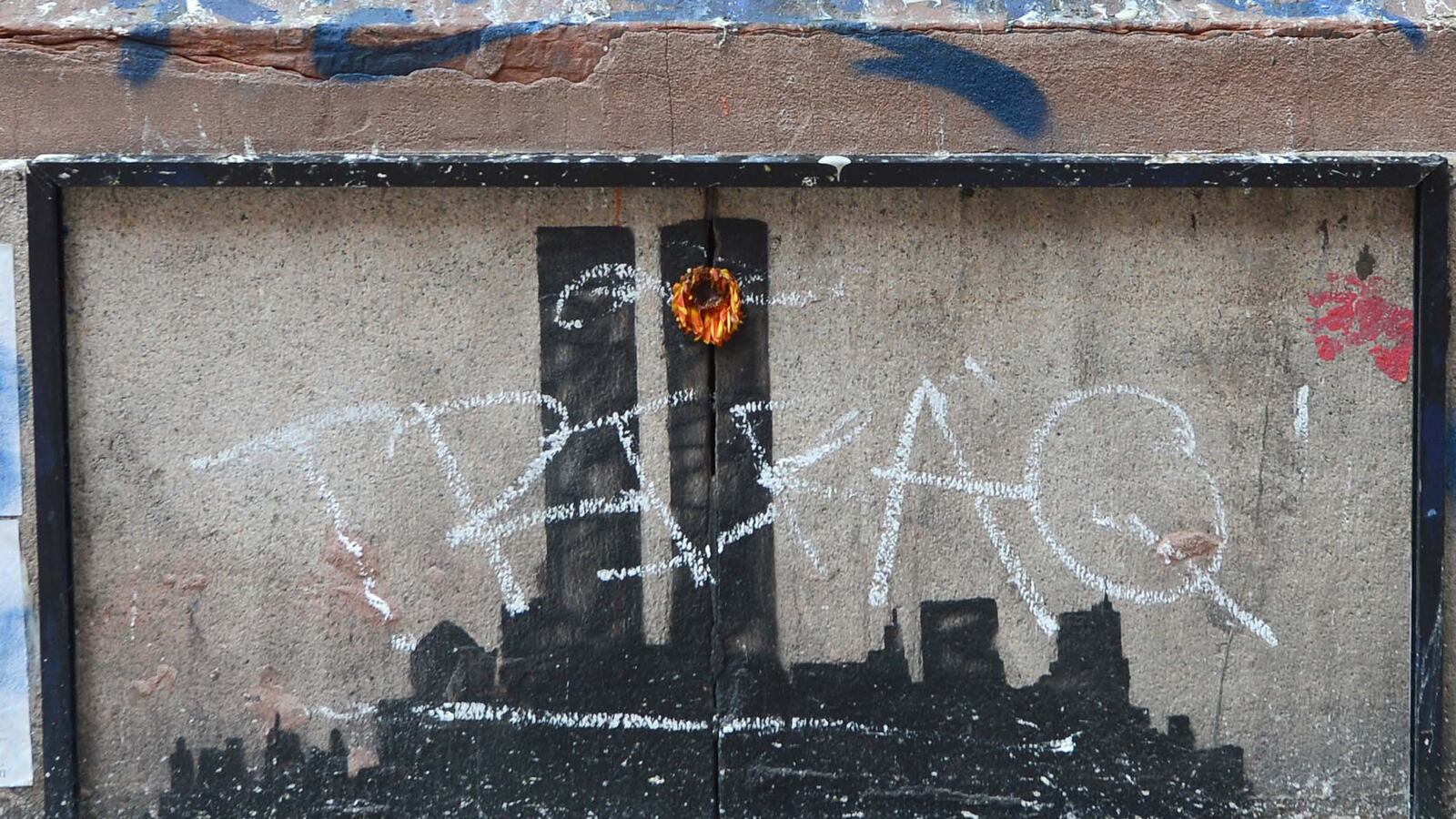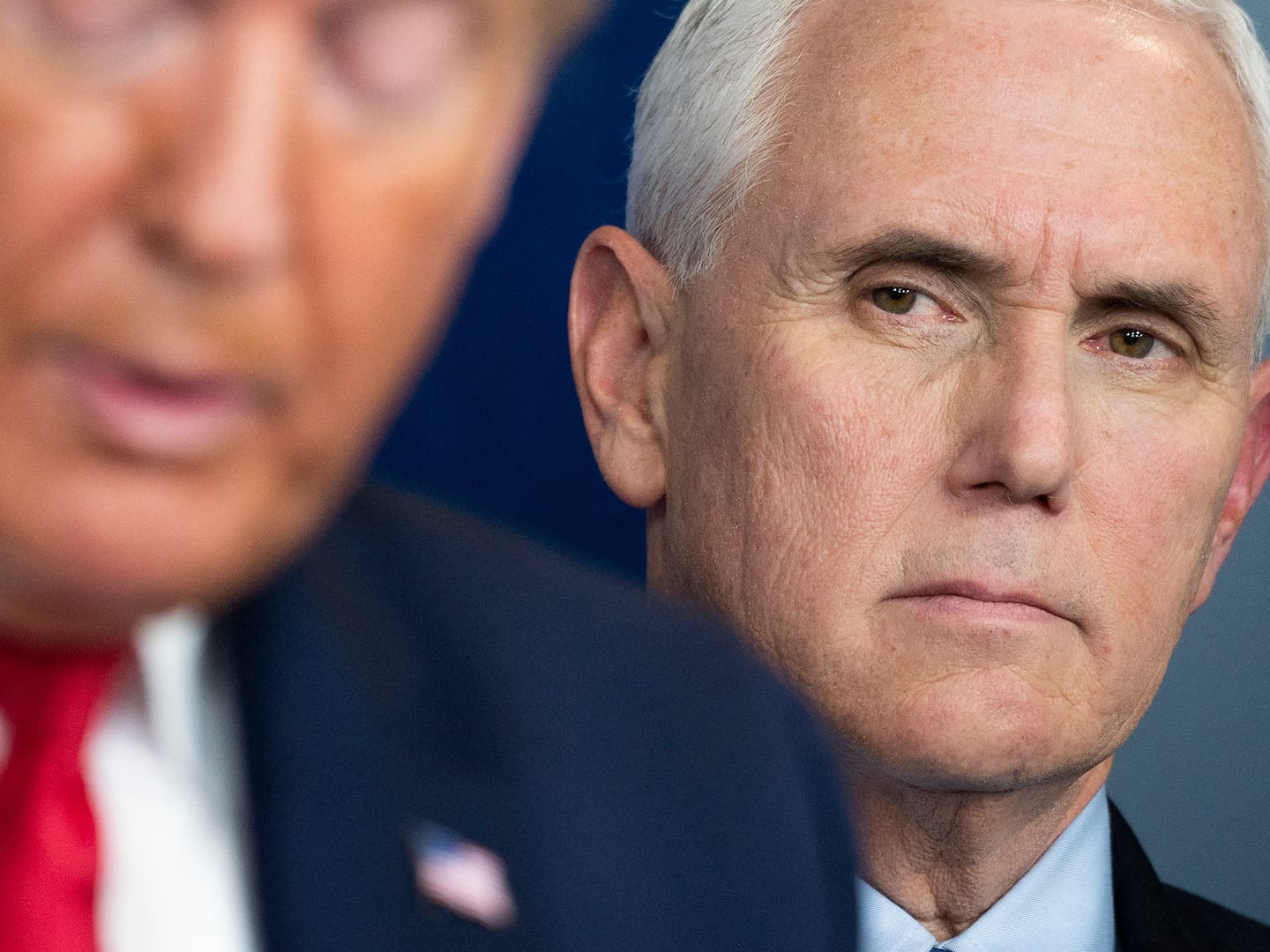It’s one of Banksy’s best-known and most effective images. It shows three spooks tapping a public telephone in Cheltenham, close to one of the U.K.’s intelligence hubs. But the most surprising thing about one vandal’s attempt to erase the work with silver spray paint on Thursday is how unsurprising it was. You can see that act as another episode in Britain’s simmering Street Art Wars. But you might also see it as an episode in a deepening—and disturbing—phenomenon.
Art Hate.
Banksy’s underground New York tour last October was not greeted with hugs and kisses either. “Get Banksy! NYPD Hunts Artist” read a headline on the cover of the New York Post. Mayor Bloomberg huffed, "And you running up to somebody’s property or public property and defacing it is not my definition of art.” The NYPD campaign was not fruitless—one day the artist’s website announced: “Today’s art has been cancelled due to police activity.” But did they make the collar? No. A cop was quoted to the effect that it didn’t help that nobody knew what the perp looked like.
Banksy’s crypto-tour was also greeted with highly mixed reactions by the city’s large, articulate and much interconnected community of street artists. A black-and-white text piece on a wall on 24th Street between 10th and 11th avenues in Manhattan reads: “Hektad says Banksy sold his soul to the devil.” A Banksy piece on Ludlow and Delancey shows a street artist putting up a red heart between “I LOVE” and “NY,” but white and turquoise squiggles were soon applied to the figure, defacing it as fastidiously as the piece in Cheltenham.
Some of this hostility is clearly tribal. I remember being with Christo and Jeanne-Claude when they were doing Running Fence in Sonoma County, Northern California. The often conservative-minded ranchers across whose land the fence would run were mostly pussycats. The feelings of some of the local artists about the coming of this “New York superstar” were, uh, different.
But not all the hostility is New Yorkers being New Yorkish. One of the street artist’s most successful Manhattan coups occurred when he set up a stall in Central Park where either he or, more likely, a surrogate sold his pieces for under $100. The tabloids ate it up. Yes, this was a typically deft critique on the market from the maker of Exit Through The Gift Shop, but it also underlined just how strong the Banksy market is.
“This reaction is from kids on the streets, real graffiti taggers, reacting to the corporate Banksy,” says Billy Leroy, who for three decades ran Billy’s Antiques & Props on Houston at the edge of the Bowery, and who, as such, was the custodian of the famous Graffiti Wall. “They are out there risking their necks, risking going to jail. Now the fines are really high.”
Leroy sold his property to his landlord, Tony Goldman, a real estate agent with active art interests, when the gentrification of the Bowery drove rents skywards. Goldman is now dead, but his family still runs his business and maintains the graffiti wall. One of Banksy’s more widely publicized New York coups—driving a kind of fairground buggy around while wearing a skull mask—took place on Billy’s former space.
“A, he had to rent the space from Goldman Properties,” Leroy says. “B, they needed to get a supply of electricity and, C, you could not do it without permission of Goldman. They kept using my name to identify where this thing was, to give it street credibility. And I didn’t want them to use my name to give it street cred. Banksy is a corporate entity. Which is cool. He’s made a lot of money. God bless him. We all are trying to make money. But don’t pass yourself off as an outlaw street artist. That is the problem I have with it. That’s it. That’s all!”
Much of the criticism is predictable. “Whenever anything gets that kind of recognition, there’s always going to be someone who wants to make their statement on it, whether it be jealousy or outrage,” Chris from the street art group, Robots Will Kill, says. “They feel like they have to react to it.”
Jealousy?
“When it comes to the artists, they say: ‘Well, why isn’t that me?’” Chris says.
Many feel differently.
“Some people say Banksy’s a sellout,” says Philip Mortillaro, who is in the throes of setting up a website, Streetart Live, which is planned to launch in a month to both map street art across Manhattan and offer a blog created by the artists themselves.
“I think the guy’s great! A lot of it is totally 100 percent jealousy. I like the way he kept his identity [a secret].”
Stik, a London-based Street artist, emailed me from Norway where he is putting up a piece to say, “The street is a guest book where anyone can put their thoughts and dreams, so things can get a bit messy. Now and again someone tears out a page or scribbles on someone else’s drawing, it’s not exactly in the spirit of the thing but the value of street art is that anyone can do it. We aim to make something permanent but the marks we make are often as fleeting as the feelings that moved us to make them. There are many voices to be heard, many stories to be told and there’s always a new page.”
And Art Hate?
This is a manifestation of what is known as the “Cut Down The Tall Poppy Syndrome” in Europe, where it is a wearisomely familiar presence, but it has been a relatively rare phenomenon in the United States. In the art world, it is fostered by an incessant rain of numbers in the media whenever an art star comes to its attention. And not just regarding complete newcomer to the art world—you might ask Julian Schnabel about that. But it is growing. And Banksy’s work, out there on the streets, is a soft target.






